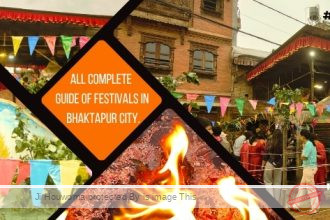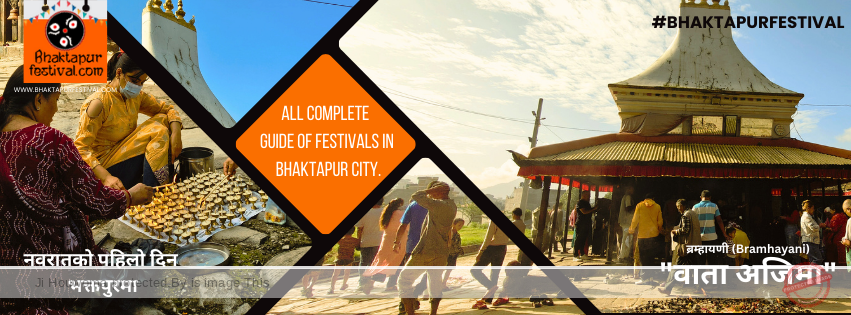Today, it is believed that Godness Bramhayani ( Brahmayani Ajima) was created on the First Day of Nava Raat. In order to make the Bhaktapur city safe, King Ananda Dev erected Ten Mahabidya and Ashtamatrika Goddesses in each of the four directions. Brahmayani (ब्रम्हायणी) is one of these Ashtamatrika in Nepal Bhasa name for Brahmayani is “Wata Ajima””वाता अजिमा”. Ashtamatrika alludes to Parvati’s Eight incarnations as God (Durga).

Godness Bramhayani is regarded in Hinduism as the power of Lord Brahma, referred to as “The Creator”. She is a manifestation of Adi Shakti (Supreme Goddess), which possesses the “Rajas Characteristic (Power for Creations )” and is the origin of Brahma‘s strength. People travel to the Brahmayani (ब्रम्हायणी) Temple in Bhaktapur on the first day of Navaraat, claiming that this Bhawani was constructed there. This day is known as Ghatasthapana Sand is referred to as “Nalaswan Taigu” day in Nepalbhasa. This region’s Pancha (Sandy Soil) is taken and used house to home.
After the formal Ghatasthapana, Shailputri Devi is summoned and worshipped in the house’s Pooja Room or at the Dashain Ghar. One of Durga‘s Nine Idols is Shailaputri, the first goddess of Navadurga . Puranic writings like Kavach, Markandeya, who is the daughter of Shailaputri, mention Parvati Devi, the daughter of Giriraj Himalaya. Shailputri Devi is revered as the universal goddess. After finishing the morning ritual, sand or soil from a nearby river or another suitable location is transported, smeared in cow dung, set in the Pooja Kotha or Dashain Ghar, and then planted on. Jamra Rakhane is another name for this action.





